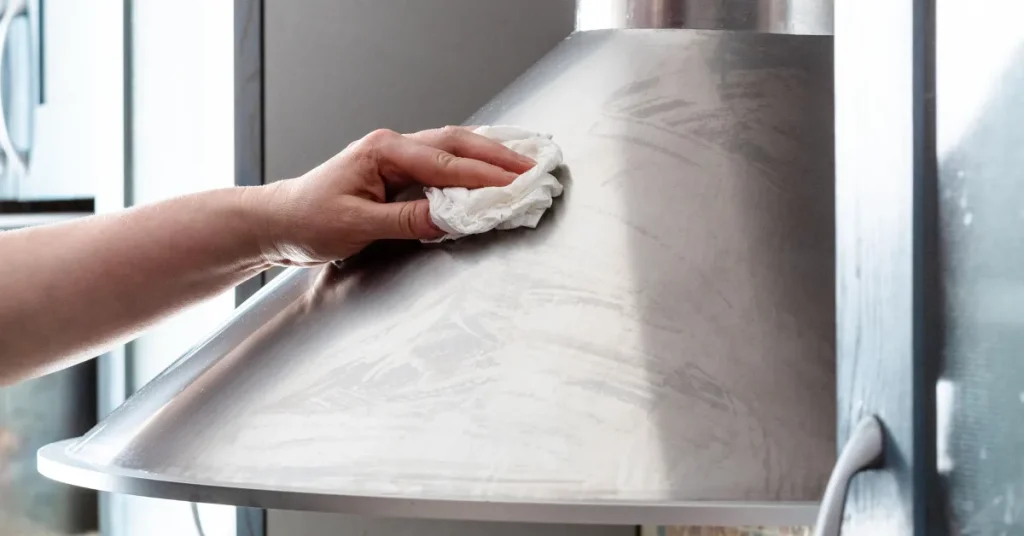16 gauge stainless steel is typically 0.0625 inches or 1.59 millimeters thick. This thickness makes it a popular choice for a variety of applications.
Stainless steel with a 16 gauge thickness balances durability and workability. It’s versatile for both industrial and domestic uses, like in kitchen sinks, automotive parts, and construction materials.
This metal’s corrosion resistance and sleek finish ensure its place in environments requiring both hygiene and aesthetics.
Given its strength, 16 gauge stainless steel stands up well to daily wear and tear, making it a reliable material for projects where medium-duty metal is needed.
The measure of 16 gauge steel strikes a perfect compromise, offering a solid sheet that’s not too heavy for practical use and installation.

Gauging The Thickness
Gauging the Thickness of stainless steel is crucial for various applications. Whether crafting a kitchen sink or assembling an industrial machine, knowing the material’s sturdiness is key.
The 16 gauge stainless steel offers a balance between strength and pliability, making it a popular choice. But how does this gauge measure up in real terms?
Standard Measurement Techniques
Steel thickness is determined using specific techniques.
- Calipers: Precision tools that measure steel thickness.
- Micrometers: Provide even more precise measurements.
- Gauge charts: Help convert measurements into gauge numbers.
16 gauge stainless steel is approximately 0.0625 inches or 1.59 millimeters thick.
Comparing 16 Gauge To Other Metal Gauges
Different gauges mean different thicknesses.
| Gauge Number | Thickness (inches) | Common Uses |
| 14 Gauge | 0.0781 | Industrial applications |
| 16 Gauge | 0.0625 | Kitchen sinks, auto body repair |
| 18 Gauge | 0.0500 | Paneling, ductwork |
| 20 Gauge | 0.0375 | Decorative uses, jewelry |
In comparison, 16 gauge is thicker than 18 and 20 but thinner than 14.
The Durability Of 16 Gauge Stainless Steel

Imagine a shield protecting a fortress. 16 gauge stainless steel offers such strength to various products. Its durable nature makes it a prime choice for many applications. Let’s dive into the heart of its toughness.
Resistance To Corrosion
In the battle against rust, 16 gauge stainless steel stands tall. A thin, invisible layer, called the passive film, forms on its surface. This film regenerates and creates a barrier. It blocks moisture and oxygen from causing rust. Everyday use or even exposure to harsh conditions won’t degrade its shiny appearance.
- Reacting to Chemicals: Stands up strong against cleaners and acids.
- Moist Environments: Ideal for kitchens and outdoor areas.
Strength In Various Conditions
16 gauge stainless steel’s might is not limited to just one scenario. A champion against heat and cold alike, it resists warping and maintains form. Frameworks for high-traffic areas employ this robust material.
| Condition | 16 Gauge Steel’s Performance |
| Heat Resistance | Remains stable up to 1,500°F |
| Cold Tolerance | Protects down to freezing temperatures |
| Physical Stress | Able to withstand heavy use and impact |
Items like sinks and commercial counters witness 16 gauge stainless steel’s resilience daily. From food prep surfaces to industrial parts, this material endures without faltering.
Practical Applications
16 gauge stainless steel stands 0.0625 inches thick. It offers a good mix of durability and workability. This makes it perfect for various uses. Let’s dive into its practical applications.
In The Kitchen: Sinks And Countertops
16 gauge stainless steel shines in the kitchen. It’s tough against dents and everyday use. See below where it works best:
- Sinks: Handles frequent use and heavy pots.
- Countertops: Resists scratches and heat from pots.
This material protects against germs. It’s also easy to clean. These features make it a top choice for food prep areas. It will last a long time in your kitchen.
Industrial Uses: Construction And Automotive
Heading outside the kitchen, 16 gauge stainless steel is a star in the industrial field. Its strength is necessary for:
| Industry | Use |
| Construction: | Supports structures and heavy loads. |
| Automotive: | Makes body panels that last long and resist rust. |
Construction workers pick it for strong, rust-free parts. Car makers use it for tough, shiny parts. It handles weather well, making it great for outdoor structures and cars.
The Fabrication Process
Understanding the fabrication process of 16 gauge stainless steel reveals the expertise behind this durable material. This process transforms the metal into a variety of products. Let’s delve into the specifics.
Cutting And Molding
Cutting and molding are core steps in fabricating 16 gauge stainless steel. They shape the material to precise specifications. Advanced machinery ensures accuracy and minimal waste.
- Laser cutting offers unmatched precision for intricate designs.
- Waterjet cutting uses high-pressure water and is ideal for thicker materials.
- Molding shapes stainless steel into desired forms through high-pressure machinery.
Joining Techniques: Welding And Riveting
Welding and riveting are common methods for joining 16 gauge stainless steel components. Each technique has its unique advantages.
| Technique | Advantages |
| Welding | Creates strong, seamless joints |
| Riveting | Ideal for joining different materials |
Selecting the right joining technique depends on the final product’s requirements. Both methods ensure durability and functionality.
Maintenance And Longevity

Understanding how to care for 16 gauge stainless steel is key to its lifespan. With proper maintenance, this material can serve its purpose for many years.
Wear and tear is inevitable, but regular cleaning and appropriate use can significantly extend its durability.
Recommended Cleaning Practices
Keeping 16 gauge stainless steel in top condition involves routine cleaning. Gentle, non-abrasive cleaners are ideal. Always wipe in the direction of the steel grain to prevent scratches.
- Use warm, soapy water for everyday cleaning.
- Apply baking soda for tough grime.
- Rinse with clean water and dry with a soft cloth.
- Avoid chlorine-based solutions and steel wool pads.
Life Expectancy Under Different Uses
The life of 16 gauge stainless steel changes with its application. In kitchen settings, daily wear may show sooner. In architectural features, it can last decades with minimal signs of aging.
| Usage Scenario | Expected Lifespan |
| Kitchen Sinks | 15-30 years |
| Architectural Elements | Over 100 years |
| Industrial Applications | Depends on maintenance and exposure |
Regular inspections help identify issues early, preserving the steel’s integrity. Its resistance to corrosion adds to its robustness, making it a smart choice for long-term use.
Purchasing Tips
Choosing the right 16 gauge stainless steel involves more than just measuring thickness. It requires a sharp eye for quality and a mind for expenses. Below, find essential tips for making the best purchase.
Identifying Quality Stainless Steel
Distinguish high-grade steel with these points:
- Check for an even, matte finish.
- Ensure there are no surface defects.
- Ask about the steel’s chromium and nickel content.
- Test with a magnet; quality stainless steel is typically non-magnetic.
These features suggest a robust material, resistant to corrosion. Trust a reputable manufacturer for consistent quality.
Cost Considerations
Keep your budget in check. Remember these key points:
| Quantity | Cost per Unit |
| Small orders | Higher price |
| Bulk purchases | Discounts likely |
Compare prices from different suppliers. Include potential shipping costs. Select the option that offers the best value.
FAQs About How Thick Is 16 Gauge Stainless Steel
How Thick In Inches Is 16 Gauge Stainless Steel?
16 gauge stainless steel has a thickness of approximately 0. 0625 inches.
How Thick Is A 16 Gauge Piece Of Steel?
A 16 gauge steel sheet typically measures 0. 0598 inches or 1. 519 millimeters in thickness.
Is 16 Or 18 Gauge Stainless Steel Thicker?
18 gauge stainless steel is thicker than 16 gauge. The lower the gauge number, the thicker the steel.
What Will 16 Gauge Steel Roughly Have Thickness Equal To?
A 16 gauge steel sheet typically has a thickness of approximately 1. 59 mm or about 0. 0625 inches.
Conclusion
Understanding the thickness of 16 gauge stainless steel is essential for numerous projects. This 1. 59mm measurement equips you for informed decisions in construction and design.
Precision in selecting the right thickness ensures durability and cost-effectiveness. Choose wisely, and your stainless steel applications will stand the test of time.
Resources:
1. https://www.trade.gov/steel-products-hts-codes
